Want to know how to hang plates on the wall? I’m sharing my tips & tricks and the plate hangers that I used to get the job done right!
For months I kept my beautiful new plates sitting in a cabinet where they weren’t used or seen. And the big bare wall in my dining room? It stayed bare. Because honestly the whole idea of designing and hanging a decorative plate wall intimidated me. But last month I finally did it – I hauled my plates out of the cabinet and hung them up on our dining room wall:
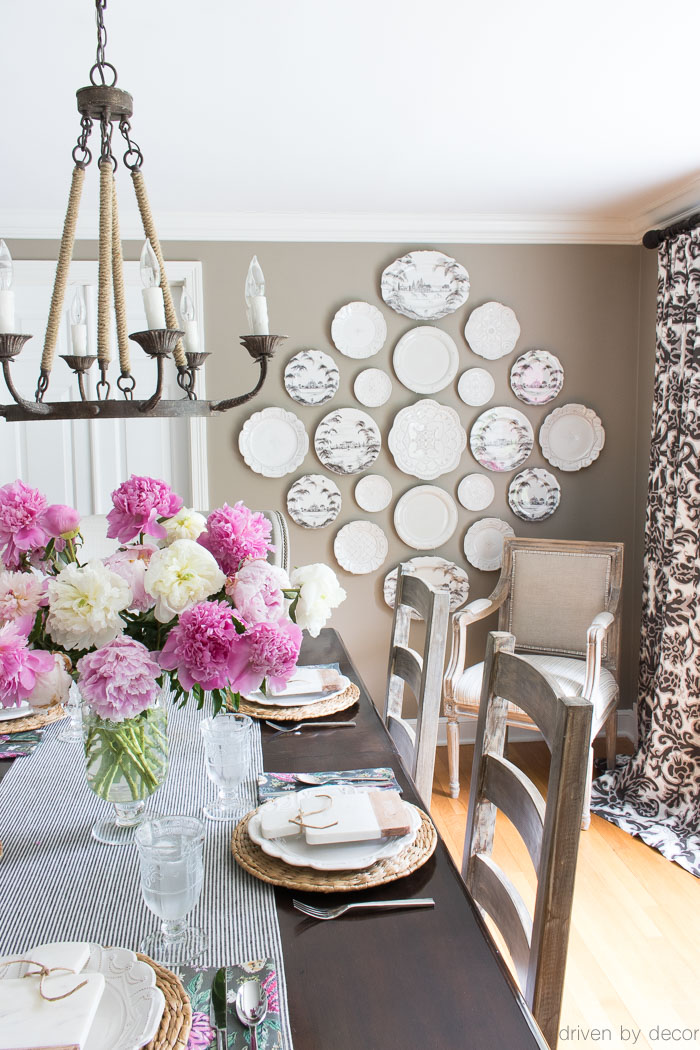 It turned out to be one of my favorite dining room wall decor ideas! The trickiest part was figuring out the how-tos of hanging the plates so I thought I’d share what worked best for me, what’s worked for others, and why you may want to choose one method of hanging plates over the other (post includes affiliate links – see my full disclosure statement {here}):
It turned out to be one of my favorite dining room wall decor ideas! The trickiest part was figuring out the how-tos of hanging the plates so I thought I’d share what worked best for me, what’s worked for others, and why you may want to choose one method of hanging plates over the other (post includes affiliate links – see my full disclosure statement {here}):
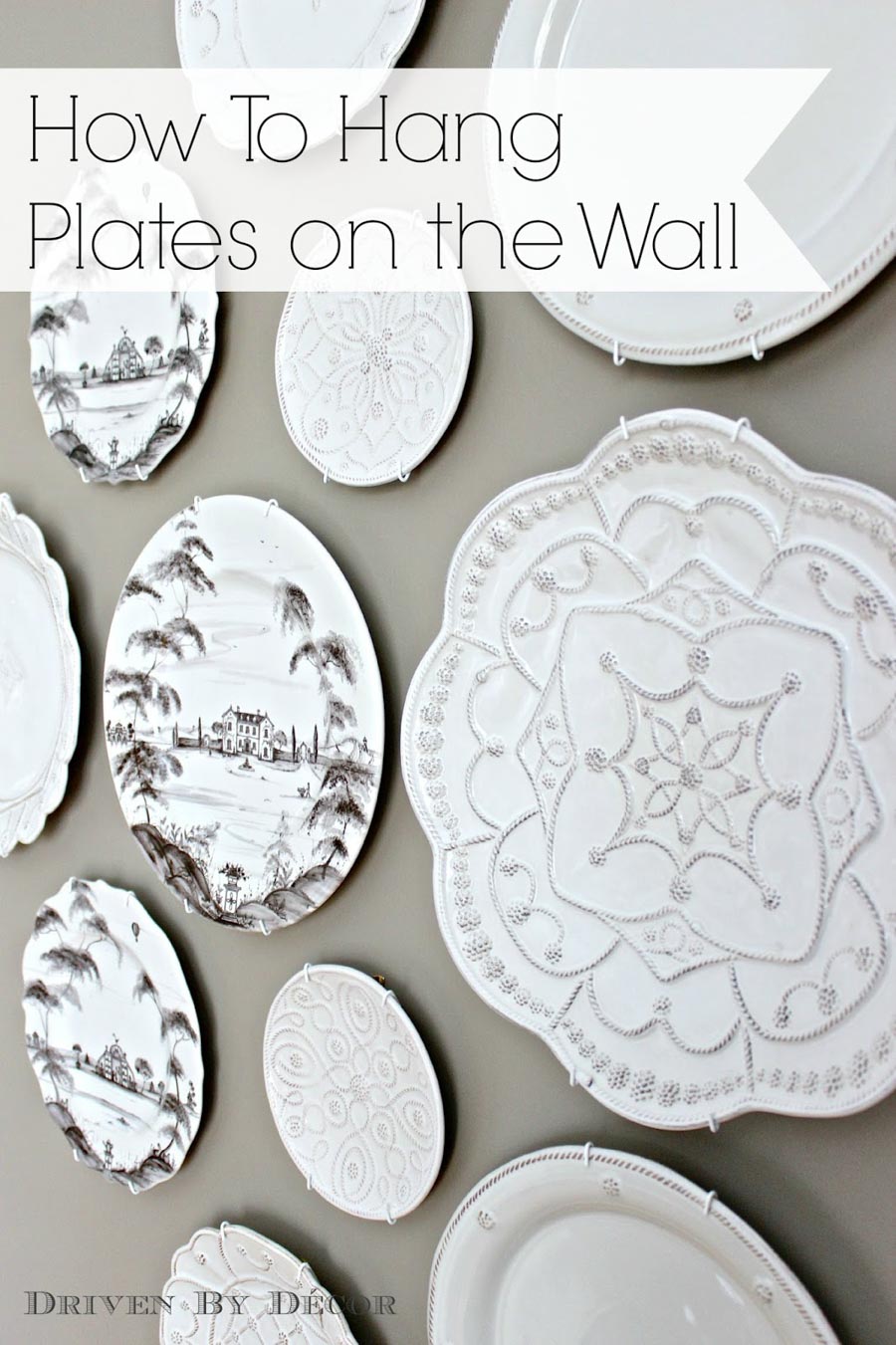
Step 1: Figure Out How You Want to Arrange Your Plates
Take all the plates that you’re thinking about using in your plate wall and lay them out on the floor. If you space constraints for the wall that they’ll be hanging on, it helps to put some painter’s tape on the floor to mark the max width and height that you have to work with. Arrange and rearrange until you figure out a design that you love!
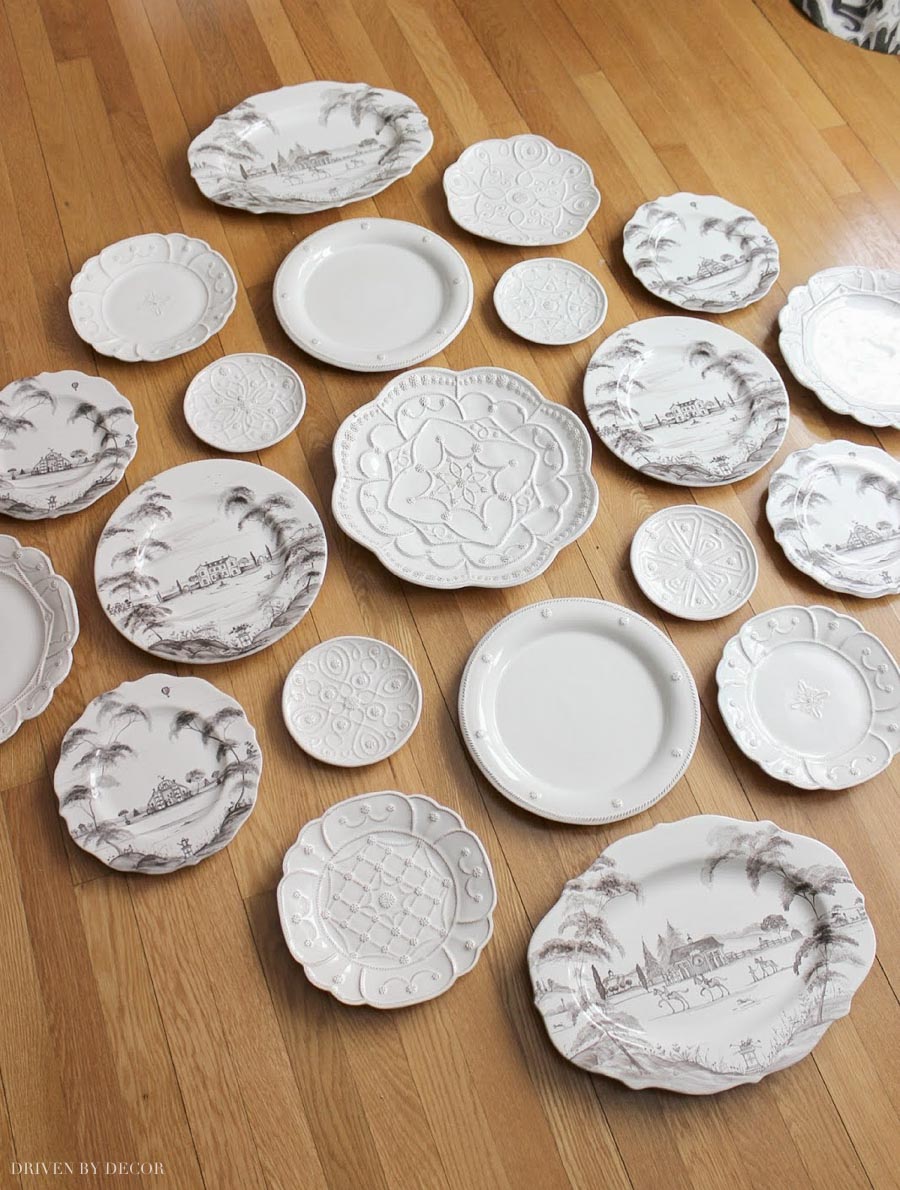
Step 2: Trace Each Plate on Paper
I wanted to see the arrangement up on the wall before nailing in 20+ hangers and realizing that I should have shifted it up or down or changed some plates around so I traced the plates on kraft paper and cut each of them out. Once each plate was cut out, I drew both a horizontal and vertical line through the center of each paper plate, which helped me line them up evenly on the wall using a level (I wish I was a girl who could just wing it and not worry if things don’t line up quite right but I know myself enough to know that it would bug me if the arrangement was visibly “off”…).
Step 3: Tape Your Templates to the Wall
Once I had my plate templates arranged and level on the wall, I taped them to the wall with LOTS of tape to make sure they wouldn’t fall down overnight (I was doing my hanging the next day). And then when I was getting my girls their breakfast the next morning, I heard a rustling in the dining room and found them in a heap on the floor. Nooo! I had used Delicate Surfaces painter’s tape and it didn’t hold. Ugh. Lesson learned. I redid the arrangement but this time used regular painter’s tape and put a tiny nail through the center of each plate just to be extra sure we didn’t have a repeat incident.
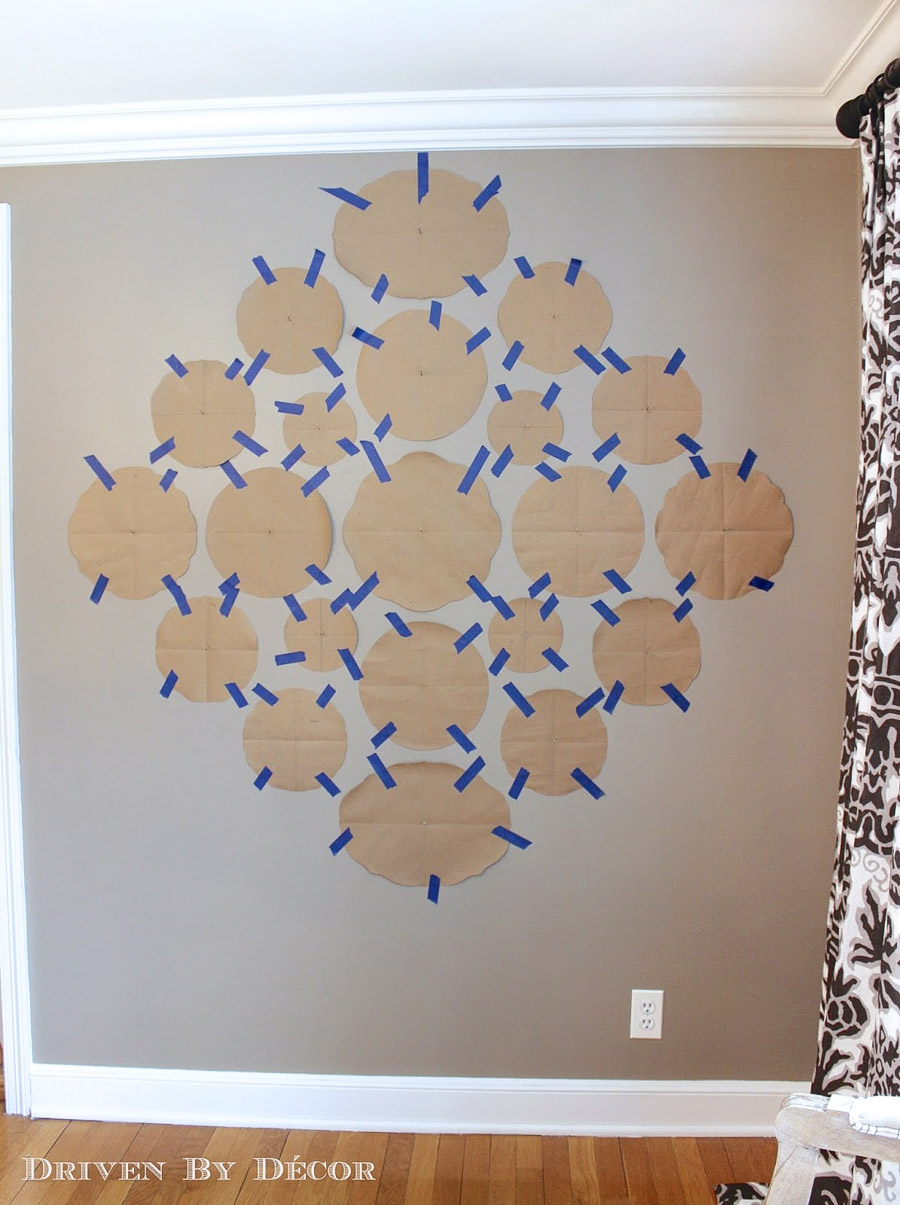
Step 4: Figure Out the Best Plate Hangers for You and Hang Them Up!
My original plan was to hang my plates using {these} Disc Hangers, which are adhesive discs that you adhere to the back of your plates. The advantages of the Disc Hangers are that they allow your plates to hang flat against the wall and they are invisible once you hang them. Unfortunately, I realized that most of my plates have a raised pattern on the back – definitely not a good surface for adhering a flat Disc Hanger.
The other disadvantages of the Disc Hangers are that you can’t easily remove them to use the plates – I wanted to be able to take some of the platters off of my wall if needed to use them for serving food at parties every now and then and the Disc Hangers wouldn’t allow me to do them. Also, according to the reviews some people have had issues with their plates fall off the wall when using them. But there are others who have used them with beautiful results (and no broken plates!) such as Emily of Timeless Paper who used them to hang this gorgeous plate wall over her bed (don’t you love it?!):
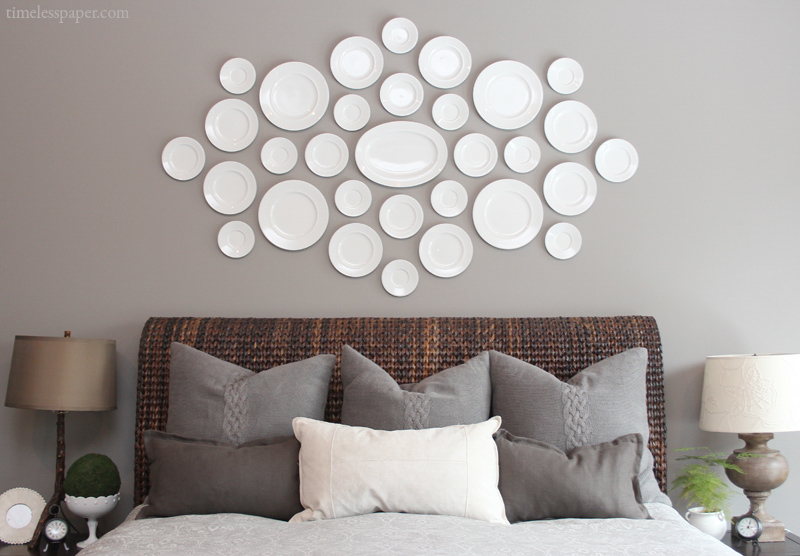 Since the Disc Hangers weren’t going to work for me, I ended up hanging my plates using Tripar’s white vinyl coated plate hangers found {here}. Beware that they do “run small” – my 9″ plates did not fit the 7″-9″ hanger size – I had to use the 10″-14″ size.
Since the Disc Hangers weren’t going to work for me, I ended up hanging my plates using Tripar’s white vinyl coated plate hangers found {here}. Beware that they do “run small” – my 9″ plates did not fit the 7″-9″ hanger size – I had to use the 10″-14″ size.
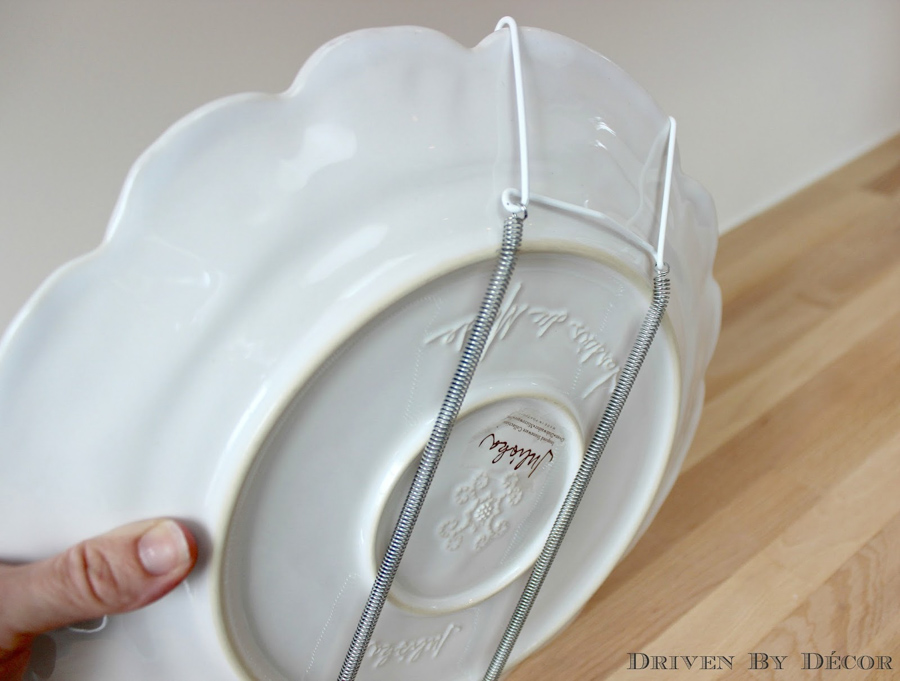
Since they are vinyl coated, they won’t scratch the plates like plain wire hangers can and I love that when you use this type of plate hanger, you can easily remove the plates from the wall and use them. The key to working with these hangers is to bend the top of the hanger so that your plate will lay flat on the wall once hung. The best way to do this is to first attach the plate hanger to the plate and lie the plate on a flat surface. The top of the hanger should (barely) touch the flat surface that your plate is lying on. If it doesn’t, take the hanger off the plate, bend it, and place it back on to see if it’s where you need it to be.
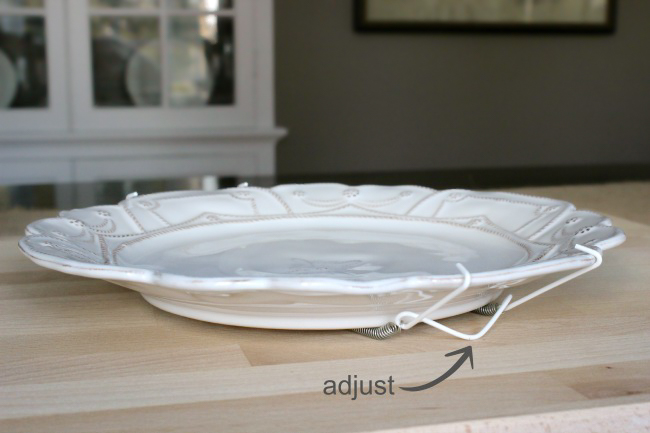
Once all of your plates have hangers, it’s time to get them up on the wall! I used {these OOK picture hooks} – hook your OOK hook onto the wire hanger that is attached to your plate and measure the distance from the top of the plate down to where the nail will go into the OOK hook. Transfer this measurement to your plate template and gently tap the OOK hook nail in just a bit.
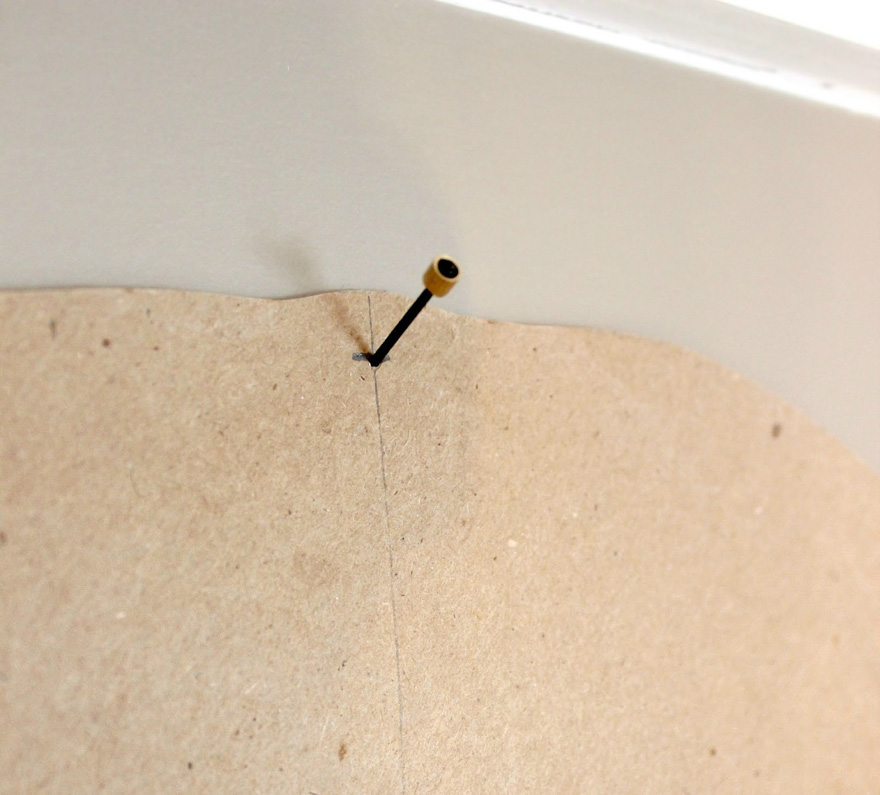
Then remove the template from the wall, put the nail through the OOK hook, and hammer it in at the same spot that you tapped it into moments ago. Now hang your plate!
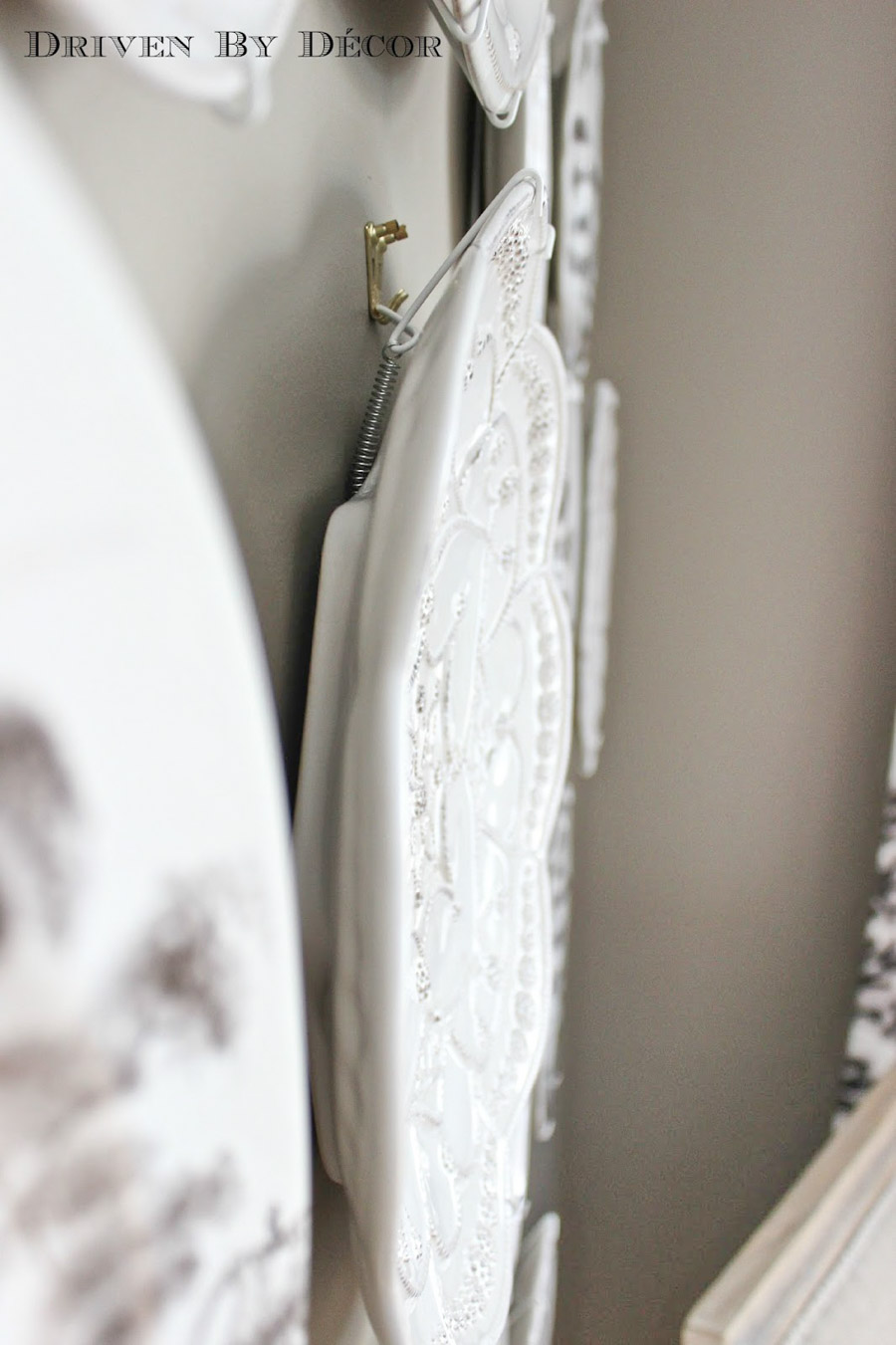
Repeat.
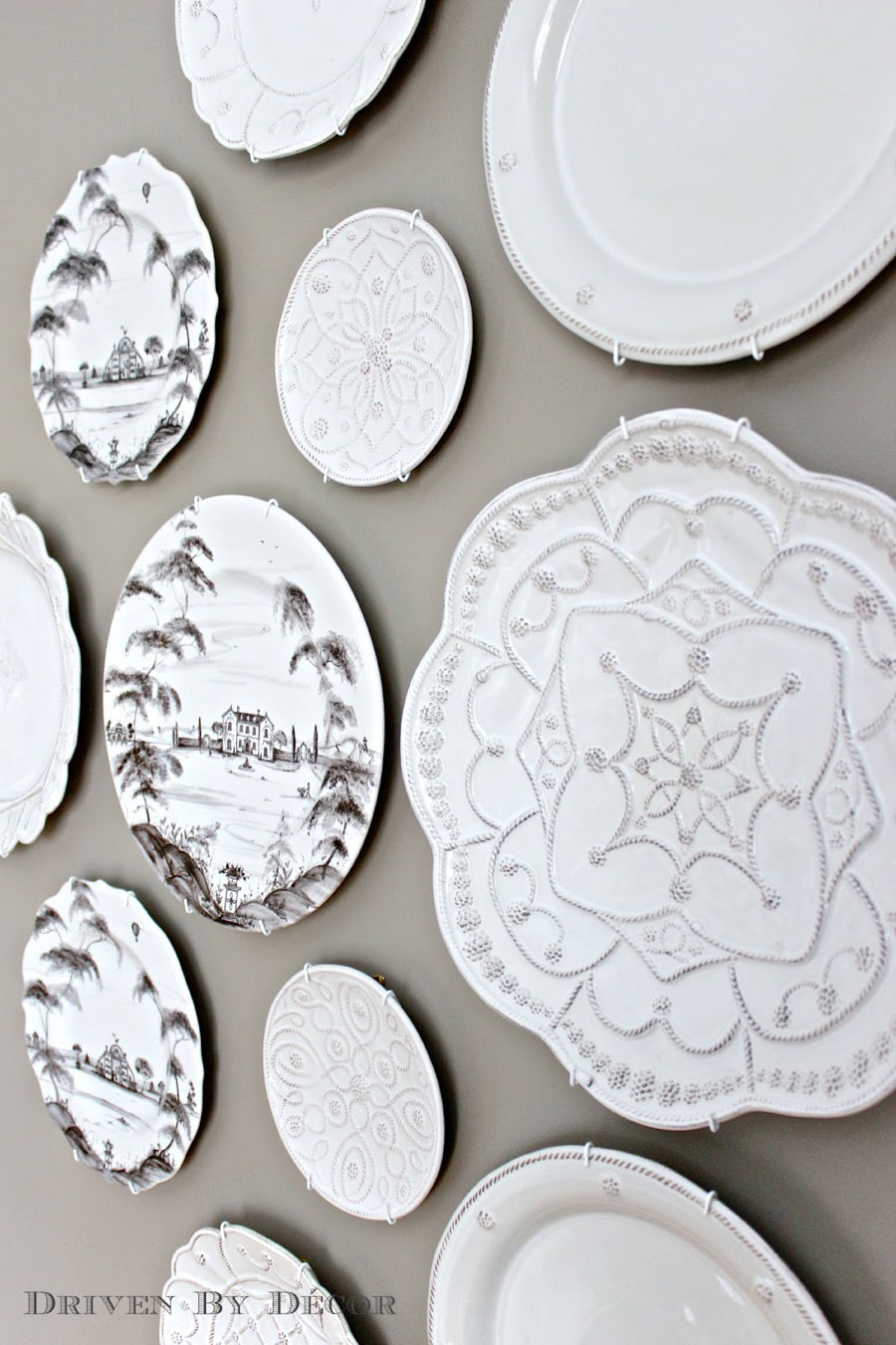
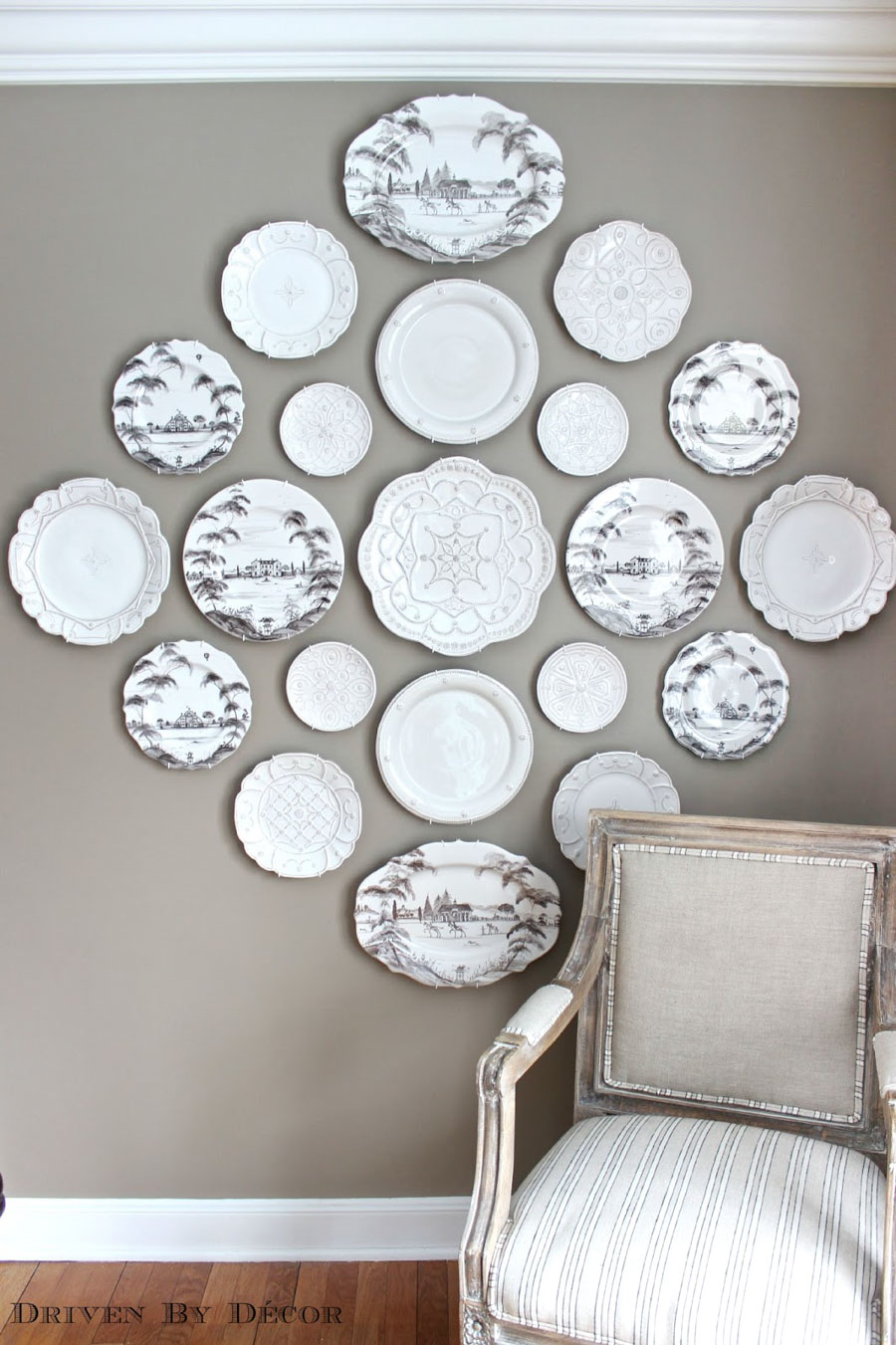
It’s definitely my favorite thing about our dining room – you can take a tour to check the entire space out including a bunch of fun “before” and “after” pics (it wasn’t too pretty when we moved in!) {here}!




